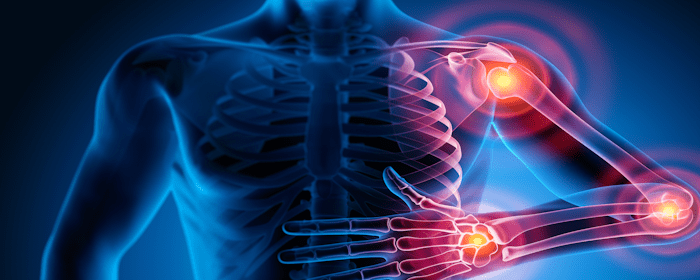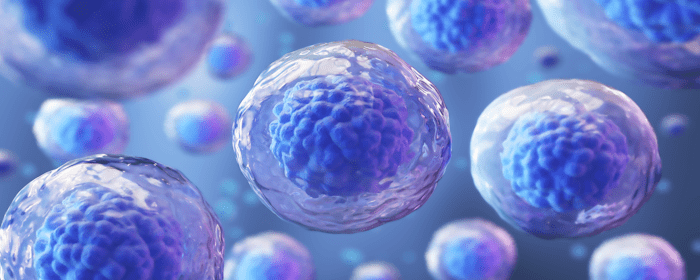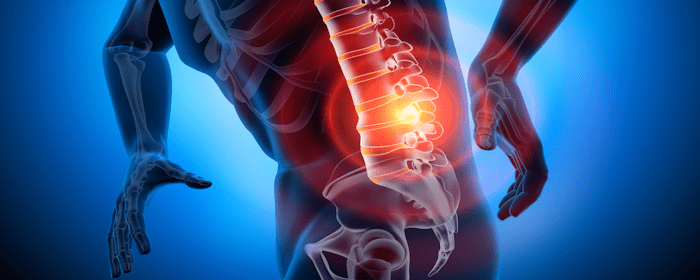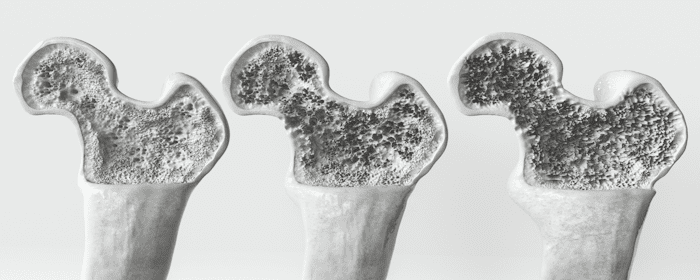
by admin | Jun 19, 2025 | Mesenchymal Stem Cells, Regenerative Medicine, Stem Cell Research, Stem Cell Therapy
Rheumatic diseases are a broad group of chronic conditions that affect the joints, muscles, bones, ligaments, and sometimes internal organs. They are usually the result of a malfunctioning immune system that attacks healthy tissues. This leads to inflammation, pain, stiffness, and, in some cases, permanent organ damage. Common conditions in this group include rheumatoid arthritis (RA), systemic lupus erythematosus (SLE), systemic sclerosis (SSc), osteoarthritis (OA), ankylosing spondylitis (AS), and osteoporosis (OP).
These illnesses can significantly reduce a person’s quality of life. Many people face persistent pain, fatigue, and reduced mobility, as well as the emotional challenges of living with a lifelong condition. While current treatments such as anti-inflammatory drugs, immunosuppressants, and biologic medications help manage symptoms, they do not cure the disease. They also come with risks of side effects and may not provide enough relief for everyone.
As part of this review, Hetta et al. summarize the clinical progress of MSC therapy in rheumatic diseases, highlight key findings from preclinical and clinical studies, and discuss challenges and future directions.
Role of Mesenchymal Stem Cell Therapy in Rheumatic Disease Management
Stem cells are unique because they can renew themselves and develop into many different types of cells. Mesenchymal stem cells, or MSCs, are a type of adult stem cell that can be found in bone marrow, fat tissue, umbilical cord blood, and even skin.
MSCs are particularly interesting to researchers because they can transform into bone, cartilage, and adipose cells. They also release natural substances that reduce inflammation, calm the immune system, and support healing. These qualities make them an appealing option for treating autoimmune and inflammatory diseases such as rheumatic conditions.
Why MSCs May Help Rheumatic Diseases
In rheumatic diseases, the immune system mistakenly attacks the body’s own tissues. This sets off cycles of inflammation and damage. MSCs may help by calming the overactive immune response, encouraging the growth of protective immune cells, and releasing growth factors that repair damaged tissues.
Rather than only masking symptoms, MSC therapy aims to restore balance to the immune system and support long-term improvement. This is why it has attracted so much attention in both laboratory research and clinical trials.
Promising Results Across Rheumatic Diseases
According to the authors, research into mesenchymal stem cells (MSCs) has shown encouraging results across a variety of rheumatic diseases where current treatments often fall short. Specifically:
- In lupus, MSCs appear to calm harmful immune cells, promote regulatory ones, and reduce kidney inflammation, with early trials showing improvement in patients resistant to standard drugs.
- In rheumatoid arthritis, studies suggest MSCs can lower inflammatory signals, protect cartilage, and ease symptoms, particularly in severe cases. Ankylosing spondylitis, which mainly affects the spine, may also benefit from MSC therapy, as both animal and small human studies indicate reduced inflammation and pain.
- For osteoarthritis, MSCs may help repair cartilage and ease joint pain, with clinical trials reporting improved function in the knees and hips.
- Osteoporosis research shows MSCs may encourage bone-building cells and inhibit bone breakdown, with exosome-based approaches offering a potential “cell-free” treatment.
- In systemic sclerosis, MSCs have been linked to reduced scarring and improved skin and organ function.
- In rare muscle disorders like dermatomyositis and polymyositis, early studies suggest gains in muscle strength and healing where conventional therapies have failed.
Together, these findings highlight MSCs as a promising new approach across a wide spectrum of autoimmune and degenerative conditions, though more large-scale and long-term studies are needed.
Ongoing Challenges and Emerging Strategies in MSC Therapy
Despite encouraging progress, MSC therapy still faces challenges. Hetta et al. report that results are not consistent, and not every patient responds the same way. The source of MSCs, the number of cells given, and the method of delivery can all affect outcomes.
Another challenge highlighted by the authors is standardization. To move MSC therapy into widespread use, researchers need to agree on best practices for collecting, preparing, and administering these cells.
Future approaches may involve combining MSC therapy with existing medications, engineering MSCs to work more effectively, or using MSC-derived exosomes as a safer alternative to full cell transplantation.
Therapeutic Promise and Future Outlook for Rheumatic Diseases
Mesenchymal stem cells represent one of the most exciting possibilities for treating rheumatic diseases. Research so far shows potential benefits for conditions such as lupus, rheumatoid arthritis, osteoarthritis, osteoporosis, systemic sclerosis, ankylosing spondylitis, and inflammatory muscle diseases. Unlike traditional medications that only ease symptoms, MSCs may help restore immune balance and encourage tissue repair.
While more research is needed to understand the long-term effects and best methods, MSC therapy offers real hope to millions of people living with painful and disabling conditions. With continued progress, the authors believe that it may one day change the way these chronic diseases are treated and give patients new opportunities for healing and improved quality of life.
Source: Hetta HF, Elsaghir A, Sijercic VC, Ahmed AK, Gad SA, Zeleke MS, Alanazi FE, Ramadan YN. Clinical Progress in Mesenchymal Stem Cell Therapy: A Focus on Rheumatic Diseases. Immun Inflamm Dis. 2025 May;13(5):e70189. doi: 10.1002/iid3.70189. PMID: 40353645; PMCID: PMC12067559.

by admin | Jun 17, 2025 | Mesenchymal Stem Cells, Multiple Sclerosis, Regenerative Medicine, Stem Cell Research, Stem Cell Therapy
Multiple sclerosis (MS) is a chronic condition that affects the central nervous system, where the immune system mistakenly attacks the protective covering of nerve fibers, called myelin. This damage interrupts communication between the brain and the body, leading to symptoms such as muscle weakness, difficulty walking, fatigue, and loss of coordination. MS is a complex disease with varying patterns. Some people experience relapsing and remitting symptoms, while others develop progressive forms that steadily worsen over time.
Current treatments for MS focus on reducing the frequency of relapses, managing symptoms, and slowing disease progression. However, these treatments are often limited in their effectiveness, especially in severe or progressive forms of the disease. Some medications can also cause significant side effects, including flu-like symptoms, skin irritation, or increased risk of infections. This has led researchers to explore new therapeutic strategies, including the use of mesenchymal stem cells (MSCs).
In this review, Islam et al. assess the effectiveness and safety of MSC therapy in individuals diagnosed with MS.
Understanding Mesenchymal Stem Cells
MSCs are a type of adult stem cell found in multiple tissues, such as bone marrow, adipose, and umbilical cord tissue. They are known for their ability to grow and differentiate into various cell types, including bone, cartilage, and nerve cells. MSCs also produce molecules that help regulate inflammation and support tissue repair.
Because of these properties, MSCs have been investigated as a potential therapy for many conditions, including heart disease, spinal cord injury, and autoimmune disorders. In MS, researchers believe MSCs could help repair damaged nerve cells, reduce inflammation, and potentially slow or even reverse disease progression.
Clinical Evaluation of MSC Therapy for MS
This systematic review and meta-analysis by Islam et al. examined the effectiveness and safety of MSC therapy in patients with MS. This study pooled data from multiple clinical trials, looking at how patients’ conditions changed after receiving MSC treatment. The main measure used to track improvement was the Expanded Disability Status Scale (EDSS), a standard tool used in MS research to evaluate mobility, coordination, and overall neurological function.
The analysis found that approximately 40% of patients experienced improvements after MSC therapy. Another 33% remained stable, while about 18% saw a worsening of their condition. According to the authors, these results suggest that MSC therapy could have a meaningful impact on disease progression for a significant proportion of MS patients.
Safety Profile of MSC Therapy
Safety is a critical consideration for any new treatment. In this meta-analysis, no major complications were reported. Some minor side effects, including headaches, fever, urinary tract infections, and respiratory infections, were observed. Most of these were mild and manageable, indicating that MSC therapy is generally well-tolerated.
Interestingly, the source of the MSCs appeared to influence the therapy’s effectiveness. MSCs derived from umbilical cord or placental tissue were associated with higher improvement rates (57%) compared to MSCs derived from bone marrow (38%). According to the authors, these differences may be related to factors such as lower immunogenicity, higher cell proliferation capacity, and non-invasive collection methods for umbilical cord or placental MSCs.
Routes of MSC Administration and Effectiveness
MSCs can be delivered intravenously or directly into the cerebrospinal fluid through intrathecal injection. The study found that intravenous administration resulted in better outcomes, with 58% of patients showing improvement, compared to 33% for intrathecal administration. This information may guide future treatment protocols and clinical decisions.
Mechanisms of MSC Therapy in MS
The therapeutic effects of MSCs in MS are thought to be driven by their ability to modulate the immune system and promote nerve repair. In MS, immune cells such as T helper cells and microglia contribute to inflammation and nerve damage. MSCs can shift the balance of these immune cells, reducing harmful inflammation while encouraging protective and repair-oriented responses.
Additionally, MSCs may directly support the regeneration of neurons and glial cells, which are essential for maintaining the structure and function of the nervous system. By promoting a healthier environment for nerve cells, MSC therapy has the potential to improve neurological function and slow disease progression.
Insights from Clinical Trials
Several clinical trials have evaluated MSC therapy for MS, both as randomized controlled studies and observational research. The pooled data from these trials support the therapy’s potential to improve or stabilize neurological function. Early reports also confirm its safety, with minimal serious adverse events.
Studies suggest that factors such as patient age, disease severity, and the origin of MSCs influence outcomes. For example, younger donor cells and MSCs from umbilical cord or placental tissue appear to have higher efficacy. Intravenous administration also seems more effective than intrathecal delivery.
Comparison with Conventional MS Treatments
Existing MS treatments, such as disease-modifying drugs like Ocrelizumab, Fingolimod, and Teriflunomide, are effective for some patients but often fall short in severe or progressive cases. Side effects and long-term risks can also limit their use. MSC therapy offers a novel approach by potentially repairing nerve damage rather than simply managing symptoms or suppressing the immune system. For patients who do not respond well to conventional treatments, MSC therapy may provide a new option.
Current Limitations and Future Research Directions
While MSC therapy shows promise, there are still unanswered questions. Clinical trials vary in terms of the number of patients, dosage, source of MSCs, and methods of administration, which can make it challenging to compare results. There is also a need for larger, long-term studies to determine the most effective protocols and confirm the durability of treatment benefits.
Future research will likely focus on optimizing MSC doses, identifying the best cell sources, and refining delivery methods. Researchers also aim to better understand the mechanisms by which MSCs promote repair and reduce inflammation in the nervous system.
Future Outlook for MSC Therapy in Multiple Sclerosis
Mesenchymal stem cell therapy represents a promising new approach for treating multiple sclerosis. Many patients experience improvements or maintain stability after receiving MSCs, and serious adverse events are rare. The therapy’s ability to modulate the immune system, support nerve repair, and promote tissue regeneration sets it apart from conventional treatments.
Ongoing research is focused on refining MSC therapy protocols, determining optimal dosages, and assessing long-term outcomes. Larger, high-quality clinical trials will be essential to establish MSC therapy as a reliable and effective option for people living with MS.
For patients exploring new treatment possibilities, MSC therapy offers hope for improved neurological function, better quality of life, and potential disease stabilization.
Source: Islam MA, Alam SS, Kundu S, Ahmed S, Sultana S, Patar A, Hossan T. Mesenchymal Stem Cell Therapy in Multiple Sclerosis: A Systematic Review and Meta-Analysis. J Clin Med. 2023 Sep 30;12(19):6311. doi: 10.3390/jcm12196311. PMID: 37834955; PMCID: PMC10573670.

by admin | Jun 10, 2025 | Degenerative Disc Disease, Regenerative Medicine, Stem Cell Research, Stem Cell Therapy
Chronic back pain is one of the most common health complaints worldwide, especially among older adults. As the population continues to age, spinal conditions such as intervertebral disc degeneration (IDD) are becoming increasingly common. These conditions not only cause physical discomfort but also impact mental well-being, reduce mobility, and lead to increased healthcare costs.
Researchers are exploring innovative solutions to slow or even reverse spinal degeneration. Among the most promising developments is stem cell therapy. This approach aims to restore the health and function of spinal discs using the body’s own regenerative capabilities. As scientists uncover more about the biology of the spine and the potential of stem cells, new opportunities for long-lasting relief are emerging.
In this review, Zhang et al. summarize and analyse the current evidence on stem cell therapy for IDD.
Understanding the Structure and Function of the Intervertebral Disc
The spine is made up of vertebrae separated by intervertebral discs. These discs function as cushions that absorb shock and help the spine move flexibly. Each disc consists of three main parts: the nucleus pulposus (NP) at the center, the surrounding annulus fibrosus (AF), and the cartilaginous endplates (CEPs) on the top and bottom.
The NP is rich in water and proteoglycans, which help it resist compression. It is surrounded by the AF, a tough, layered ring of collagen fibers that provides structural stability. The CEPs connect the discs to the vertebrae and allow for nutrient exchange between blood vessels and the largely avascular disc.
When these structures begin to deteriorate, the disc loses its ability to support and cushion the spine. This breakdown is known as intervertebral disc degeneration. Over time, the disc becomes dehydrated, the structure weakens, and inflammation increases. These changes can compress nearby nerves, leading to pain, stiffness, and limited movement.
The Degenerative Process and Its Impact on the Spine
IDD can begin as early as a person’s 20s, but it becomes much more common with age. As NP cells decline and the extracellular matrix (ECM) breaks down, the disc’s water content decreases. This causes the disc to shrink and stiffen, altering spinal mechanics and leading to a chain reaction of damage in surrounding structures.
Inflammation plays a major role in disc degeneration. Pro-inflammatory cytokines such as interleukins (IL-1, IL-6, IL-8) and tumor necrosis factor-alpha (TNF-α) promote the production of enzymes that degrade the ECM. These cytokines reduce the synthesis of proteoglycans, weaken the disc’s ability to absorb shock, and increase pain.
In advanced stages of IDD, the disc may bulge or herniate, pressing against spinal nerves and causing chronic back pain, sciatica, or even more serious complications like spinal stenosis. Because the disc has limited blood supply, its capacity for self-repair is minimal. Traditional treatments often focus only on symptom relief rather than restoring disc health.
Current Approaches and Their Limitations
Conventional treatments for IDD range from physical therapy and anti-inflammatory medications to steroid injections and, in severe cases, surgery. These methods may provide short-term relief but do not address the underlying causes of disc degeneration.
Surgical options such as spinal fusion or disc replacement may stabilize the spine or remove damaged tissue, but they come with risks such as infection, nerve injury, or limited mobility. Surgery also does not regenerate the disc or replace lost NP cells. Because of these limitations, there is growing interest in regenerative therapies that aim to heal the disc itself.
The Promise of Stem Cell Therapy
Stem cells are capable of transforming into many different cell types, including those needed for disc repair. They also release signaling molecules that help reduce inflammation, promote healing, and support tissue regeneration.
Several types of stem cells are currently being explored for IDD treatment. Mesenchymal stem cells (MSCs) are the most commonly used and can be derived from bone marrow, adipose (fat) tissue, or umbilical cord tissue. These cells have shown promise in preclinical studies for their ability to differentiate into NP-like cells, restore disc structure, and improve spinal function.
Other stem cell types include intervertebral disc-derived stem cells (such as NP stem cells and AF stem cells) and pluripotent stem cells like embryonic stem cells (ESCs) or induced pluripotent stem cells (iPSCs). While these cells have potential, their use is often limited by ethical concerns, tumorigenic risks, or complex handling requirements.
Supporting Evidence from Laboratory, Animal, and Clinical Studies
Laboratory and animal studies have provided strong evidence that stem cells can help repair degenerated discs. In animal models, stem cell injections have been shown to reduce inflammation, restore disc height, and increase ECM production. Some early clinical trials in humans have also reported improvements in back pain and disc structure after stem cell treatment.
However, outcomes vary depending on the cell type, delivery method, and patient characteristics. In some studies, high doses of injected cells caused adverse effects, including inflammation or unintended cell migration. Clinical trials with hematopoietic stem cells (HSCs), for example, showed positive effects in animals but limited benefit in human patients.
Overall, while the potential is clear, the authors call for more standardized protocols and long-term data to confirm the safety and effectiveness of stem cell therapies for IDD.
Challenges and Considerations in Cell Delivery
One of the major challenges in applying stem cell therapy for IDD is delivering the cells safely and effectively into the disc space. Improper injection techniques can damage the disc or lead to infection. Moreover, the harsh, low-oxygen environment inside degenerated discs can limit stem cell survival.
Another concern is cell leakage. Without a reliable carrier, injected stem cells may migrate away from the target area, reducing their therapeutic benefit or even causing side effects like bone spur formation. To overcome these obstacles, researchers are developing advanced scaffolds and carriers to contain the cells and control their release.
These carriers are typically made from biocompatible materials like hydrogels or microcapsules. They not only help anchor the cells in place but also create a supportive environment for them to survive, proliferate, and differentiate into NP-like cells. Carriers can also be combined with growth factors like TGF-β3 to enhance stem cell activity and ECM production.
The Role of Co-Culture Systems and Nanomaterials
Scientists are also exploring the use of co-culture systems—growing stem cells alongside other cell types to promote more natural interactions. For example, bone marrow-derived MSCs co-cultured with chondrocytes or NP cells have shown increased production of collagen and proteoglycans, both critical for disc structure and function.
Nanotechnology is playing a growing role as well. Self-assembling peptide nanofibers and other nanoscale scaffolds can guide stem cells to migrate, attach, and differentiate in precise ways. These materials help mimic the native environment of the disc, encouraging more effective regeneration.
Recent experiments in animal models using these technologies have demonstrated promising results in disc repair, including restored disc height and improved spinal biomechanics.
Drug Delivery Strategies to Enhance Stem Cell Function
In addition to using carriers and scaffolds, researchers are incorporating drug delivery systems into stem cell therapy. By loading therapeutic agents—such as growth factors or signaling molecules—into nanoparticles, scientists can influence stem cell behavior more precisely.
For example, studies have shown that loading albumin/heparin nanoparticles with the molecule SDF-1α and injecting them into degenerated discs enhances the ability of MSCs to home in on the disc, survive, and begin the repair process. These combined strategies are shaping the next generation of regenerative therapies for IDD.
Future Outlook for Stem Cell Therapy in Disc Degeneration
Stem cell therapy represents one of the most exciting developments in the treatment of intervertebral disc degeneration. Unlike current treatments that only relieve symptoms, stem cell approaches offer the possibility of regenerating damaged discs and restoring spine health at its source.
Efforts are currently underway to refine the technology, optimize cell carriers, and develop safer, more reliable delivery methods. The ability to tailor stem cell treatments to individual patients—through personalized medicine—may further enhance the effectiveness of these therapies.
Source: Zhang, W., Sun, T., Li, Y. et al. Application of stem cells in the repair of intervertebral disc degeneration. Stem Cell Res Ther 13, 70 (2022). https://doi.org/10.1186/s13287-022-02745-y

by admin | Jun 10, 2025 | Mesenchymal Stem Cells, Multiple Sclerosis, Neurodegenerative Diseases, Regenerative Medicine, Stem Cell Research, Stem Cell Therapy
Multiple sclerosis (MS) is a chronic autoimmune disorder that affects the central nervous system (CNS). It is characterized by inflammation, the breakdown of the protective myelin covering of nerve fibers, and progressive nerve damage. These processes contribute to a wide range of symptoms including fatigue, sensory changes, vision problems, and cognitive difficulties. MS primarily affects young adults, with women being more commonly affected than men. The disease is classified into three main types: relapsing-remitting MS (RRMS), secondary progressive MS (SPMS), and primary progressive MS (PPMS), each with distinct patterns of disease progression and neurological damage. The exact causes of MS are complex and involve interactions between genetics, environment, viral infections like Epstein-Barr virus, and epigenetic factors.
Despite advances in treatment, current therapies for MS largely focus on modulating the immune system to reduce inflammation and the frequency of relapses. Drugs such as interferon-beta, glatiramer acetate, natalizumab, and fingolimod can slow disease progression but do not consistently prevent long-term neurodegeneration or reverse existing damage. For patients with progressive forms of MS, treatment options are especially limited. This has led researchers to explore novel approaches, including stem cell-based therapies, as potential solutions to protect and repair the nervous system.
Sheikhi et al.’s review analyzes how mesenchymal stem cells (MSCs) work in multiple sclerosis (MS), including immune regulation, remyelination, and neuroregeneration. It evaluates preclinical and clinical studies on MSC efficacy, safety, and limitations, addressing challenges like delivery methods, dosing, and combining MSCs with standard therapies. The review also highlights MSCs’ potential to transform MS treatment through personalized and combination approaches.
Understanding Mesenchymal Stem Cells
MSCs are multipotent stromal cells capable of self-renewal and differentiation into various tissues, including bone, cartilage, and fat. They were first identified in bone marrow in the 1960s and later named MSCs in 1991. Beyond their regenerative properties, MSCs have significant immunomodulatory capabilities, allowing them to influence immune cell activity and reduce inflammation. These cells are naturally found in many tissues including bone marrow, adipose tissue, umbilical cord, dental pulp, and amniotic fluid. When cultured in the laboratory, they can be expanded to large populations suitable for therapeutic applications.
MSCs are particularly promising for MS because they can address multiple aspects of the disease. They help regulate immune responses, promote remyelination, support neuroprotection, and facilitate tissue repair. MSCs can modulate immune cell activity by promoting regulatory T cells, reducing pro-inflammatory cytokines, and inhibiting the proliferation of T cells, B cells, and natural killer cells. They can also differentiate into neural-like cells and release neurotrophic factors that support nerve survival and regeneration. These properties position MSCs as a potential multi-target therapy capable of both slowing disease progression and supporting repair mechanisms.
MS Pathophysiology and Immune Involvement
MS develops when the immune system mistakenly attacks the myelin sheath that insulates nerve fibers, leading to demyelination and neurodegeneration. This process is driven primarily by T helper 1 (Th1) and T helper 17 (Th17) cells, which release pro-inflammatory cytokines like interferon-gamma, interleukin-17, and tumor necrosis factor-alpha. Other immune cells, including CD8+ T cells and B cells, contribute to lesion formation by producing autoantibodies, presenting antigens, and promoting inflammation. Disruption of the blood-brain barrier allows these immune cells to infiltrate the CNS, exacerbating damage. Over time, repeated inflammatory attacks result in the formation of sclerotic plaques and permanent neurological deficits.
MS manifests in different patterns depending on disease type. RRMS is characterized by episodes of symptom flare-ups followed by partial or complete recovery. Over time, many RRMS patients transition to SPMS, which involves gradual worsening without remission. PPMS, affecting about 15% of patients, shows a steady decline from onset with minimal periods of symptom remission. Understanding these differences is important when considering therapeutic strategies, as immune-mediated inflammation dominates RRMS while neurodegeneration is more prominent in progressive forms of the disease.
Mechanisms of MSC Therapy
MSCs influence the immune system through multiple mechanisms. They can directly interact with T and B cells to promote regulatory cell populations and suppress inflammatory responses. They also release paracrine factors—signaling molecules that affect nearby cells—to reduce inflammation and protect nerve tissue. In laboratory models, MSCs inhibit the differentiation of pro-inflammatory Th1 and Th17 cells, reduce B cell activity, and support the survival of neural cells. They also produce growth factors such as hepatocyte growth factor, which enhances immune tolerance and reduces CNS inflammation.
In addition to immune modulation, MSCs support tissue repair and neuroregeneration. They provide structural support to neurons, promote oligodendrocyte development, reduce oxidative stress, and enhance angiogenesis. By secreting neurotrophic factors, they help preserve existing neurons and stimulate the formation of new neural and glial cells. This dual role of controlling inflammation and promoting regeneration makes MSC therapy particularly attractive for treating both inflammatory and progressive forms of MS.
Advanced MSC Approaches
Several strategies have been developed to enhance MSC therapy. Primed or preconditioned MSCs are treated with molecules like interferon-gamma or estradiol before administration, improving their survival, proliferation, and immunomodulatory effects. Genetically modified MSCs can express specific cytokines or adhesion molecules, further enhancing anti-inflammatory activity and neuroprotection. Additionally, MSCs release exosomes—small extracellular vesicles containing proteins, RNA, and signaling molecules—that can cross the blood-brain barrier, modulate immune cells, and promote remyelination. These cell-free approaches offer potential advantages in safety and biocompatibility while maintaining therapeutic efficacy.
Integration with Conventional Therapies
Current disease-modifying therapies (DMTs) for MS aim to control inflammation and limit structural damage to the CNS. While effective in reducing relapse rates, DMTs often have incomplete efficacy, especially in progressive MS, and can carry significant risks including infections, liver toxicity, and rare neurological complications. Combining MSC therapy with DMTs offers potential synergistic benefits. DMTs can reduce systemic inflammation, creating a favorable environment for MSC-mediated repair, while MSCs target neurodegeneration and promote remyelination. This combinatory approach could enhance overall efficacy and improve clinical outcomes compared to either treatment alone.
Challenges and Limitations
While MSC therapy shows considerable promise, several challenges remain. Optimal dosing, delivery routes, and infusion vehicles need further refinement to maximize CNS targeting and therapeutic outcomes. The source of MSCs, donor age, and cell quality also influence therapeutic potential, particularly in autologous transplants. Careful monitoring and long-term studies are essential to ensure patient safety and treatment efficacy.
Future Directions
Research continues to refine MSC therapies for MS, exploring novel delivery methods, preconditioning techniques, and combinatory approaches with existing DMTs. Personalized treatment strategies tailored to disease type, severity, and patient-specific immune profiles may maximize the benefits of MSC therapy. Advances in exosome-based therapies also offer potential for safe, effective, and minimally invasive interventions. As clinical evidence accumulates, MSCs may become a cornerstone of MS treatment, providing both neuroprotection and regeneration while complementing existing immune-modulating strategies.
Conclusion
Mesenchymal stem cells represent a transformative approach in the treatment of multiple sclerosis, offering a multi-faceted strategy that addresses both immune dysregulation and neurodegeneration. Preclinical and clinical studies demonstrate that MSC therapy can reduce inflammation, promote remyelination, support neural repair, and improve overall outcomes. Although challenges remain in optimizing delivery and dosing, ongoing research is rapidly advancing the field. With continued innovation and integration with conventional therapies, the authors conclude that MSCs hold the potential to revolutionize MS treatment, offering hope for improved quality of life and personalized care for patients living with this complex disease.
Source: Sheikhi, K., Ghaderi, S., Firouzi, H., Rahimibarghani, S., Shabani, E., Afkhami, H., & Yarahmadi, A. (2025). Recent advances in mesenchymal stem cell therapy for multiple sclerosis: Clinical applications and challenges. Frontiers in Cell and Developmental Biology, 13, 1517369.

by admin | Jun 5, 2025 | Chronic Pain, Regenerative Medicine, Stem Cell Research, Stem Cell Therapy, Studies
Chronic low back pain (cLBP) remains one of the most prevalent and disabling conditions worldwide, significantly affecting the quality of life and productivity for millions of individuals. For those dealing with discogenic cLBP—pain caused by degeneration or damage to the intervertebral discs—the journey toward lasting relief is often frustrating and unsuccessful. Traditional treatment options frequently fall short, prompting a growing interest in regenerative medicine.
The objective of this study was to evaluate the safety and efficacy of a novel, pragmatic algorithm that both diagnoses and treats cLBP by first identifying annulus fibrosus tears (fissures) in the region of symptoms and then delivering targeted fibrin sealant therapy to support disc repair and functional recovery.
Limitations of Traditional Treatments
Surgical options such as spinal fusions and discectomies have long been used to manage disc-related pain. However, these procedures carry inherent risks and may inadvertently accelerate degeneration. Fusions can increase stress on adjacent discs, while discectomies may weaken the disc structure, making them less than ideal for long-term relief.
Regenerative techniques such as bone marrow aspirate concentrate (BMC) and platelet-rich plasma (PRP) injections offer more conservative alternatives. Still, they lack a crucial component—adhesive properties that enable the treatment to remain within the disc and target the damaged tissue. Without a way to stay in place, these therapies often fail to promote true disc healing.
Evaluating Fibrin Sealant as a Regenerative Option
Fibrin, a natural component of the body’s wound healing process, offers unique advantages as a regenerative therapy. As a bio-adhesive, fibrin can immediately bind to tears in the annulus fibrosus—the tough outer layer of the disc—helping to stabilize the structure and promote tissue regeneration. This property makes fibrin an ideal candidate for treating chronic discogenic pain in a minimally invasive way.
A recent study explored the use of intra-annular injections of allogeneic fibrin sealant to treat patients suffering from chronic low back pain, even after multiple failed interventions. The results are compelling and suggest a promising path forward for individuals living with this difficult condition.
Study Overview and Patient Population
This retrospective cohort study involved 827 patients who had suffered from chronic low back pain—with or without radiculopathy (leg pain due to nerve irritation)—for a minimum of six months. The average duration of symptoms before treatment was 11.2 years, highlighting the severity and chronicity of the condition in the study group.
Participants had already failed at least four invasive treatments, including PRP, BMC, epidural steroid injections, and radiofrequency neurotomies. Some had even undergone failed surgeries such as discectomies and spinal fusions. The mean patient age was 56, and the cohort included 70% men and 30% women.
To qualify, patients underwent MRI and radiographic evaluations to rule out other conditions like spinal fractures, malignancies, severe instability, or significant stenosis. Only those who met strict inclusion criteria were eligible for treatment.
Diagnostic and Treatment Process
The study utilized annulargrams, an imaging technique used during the procedure to identify annular tears within the disc. These diagnostic tools were performed concurrently with the fibrin injections, providing real-time guidance to ensure precise delivery.
Allogeneic fibrin sealant was then injected into the identified fissures in the annulus fibrosus using fluoroscopic imaging to guide placement. Because fibrin adheres directly to the tissue, it integrates with the disc and creates a scaffold for tissue repair.
This innovative approach combines diagnosis and treatment in a single session, improving efficiency and potentially reducing healthcare costs. Future research may examine the cost-effectiveness of this streamlined model.
Promising Patient Outcomes
The results of the study were highly encouraging. Significant improvement was observed at one, two, and three years after the procedure across multiple outcome measures, including the:
- Oswestry Disability Index (ODI)
- Visual Analog Scale (VAS)
- PROMIS® Physical and Mental Health Scores
At the 12-month follow-up, 50% of patients achieved the minimum clinically important difference (MCID) in the ODI score, indicating meaningful functional improvement. Importantly, these positive outcomes were consistent across age, gender, comorbidity, and prior treatment history.
Interestingly, patients who had previously undergone surgery saw even greater relative improvement than those who had not. This finding suggests that fibrin injections may offer an effective second-line treatment for patients who did not benefit from surgical interventions.
Safety and Adverse Events
No severe adverse events or infections were reported in the study, which is consistent with existing literature showing low complication rates from interventional spine procedures. Fibrin’s natural bio-compatibility may contribute to its favorable safety profile.
Given the high safety margin and promising results, fibrin sealant appears to be a well-tolerated and effective treatment option for patients with discogenic low back pain.
Study Limitations and Future Directions
Despite its promising outcomes, the study was not without limitations. It was a retrospective analysis of prospectively collected data, and it lacked a randomized control group. Participants acted as their own controls through pre- and post-treatment comparisons. Additionally, the voluntary nature of treatment selection may have introduced selection bias.
The gender imbalance (30% female, 70% male) also limits the generalizability of results. Future studies should aim for more gender-balanced samples to better understand how the treatment performs across populations.
Patient compliance with follow-up assessments decreased over time, which may have affected the consistency of long-term outcome data. Still, the data were independently collected and analyzed by statisticians using validated tools from the Regenerative Orthobiologics Registry, which adds credibility to the findings.
To strengthen the evidence base, future studies should include randomized controlled trials (RCTs), longer follow-up periods, broader patient populations, and comparative studies against other biologics like PRP and BMC.
A New Path Forward in Regenerative Spine Care
For patients who have struggled with years of chronic low back pain, intra-annular fibrin sealant offers new hope. Its unique adhesive properties allow it to bind securely within the disc, facilitating healing where other treatments have failed. Even in patients with extensive treatment histories, including failed surgeries, fibrin sealant injections demonstrated the ability to restore function and relieve pain.
This study highlights the regenerative potential of harnessing the body’s own healing mechanisms in a minimally invasive way. It also sets the stage for larger clinical trials that can solidify fibrin sealant’s place in the treatment landscape for discogenic cLBP.
Fibrin Sealant Injections: A Breakthrough in Regenerative Treatment for Chronic Discogenic Back Pain
Intra-annular injections of allogeneic fibrin sealant represent a safe, effective, and innovative approach to managing chronic discogenic low back pain and radiculopathy. With improvements documented across both physical and mental health outcomes—and a favorable safety profile—this treatment offers a compelling alternative for patients who have not responded to traditional therapies.
As the field of regenerative medicine continues to evolve, treatments like fibrin sealant provide not only physical relief—but also hope—for those whose lives have been disrupted by chronic back pain.
Source: Pauza K, Boachie-Adjei K, Nguyen JT, Hussey Iv F, Sutton J, Serwaa-Sarfo A, Ercole PM, Wright C, Murrell WD. Long-term Investigation of Annulargrams and Intra-annular Fibrin to Treat Chronic Discogenic Low Back Pain and Radiculopathy: 1-, 2-, and 3-Year Outcome Comparisons of Patients with and without Prior Surgery. Pain Physician. 2024 Nov;27(8):537-553. PMID: 39621982.

by admin | May 29, 2025 | Regenerative Medicine, Stem Cell Research, Stem Cell Therapy
Osteoporosis is a chronic condition that causes bones to become thinner, more fragile, and more likely to break. It affects millions of people worldwide and becomes more common with age, particularly in postmenopausal women and older men. While current treatments can slow the progression of the disease, they cannot rebuild lost bone or fully reverse the damage. For this reason, regenerative medicine—specifically stem cell therapy—is emerging as a promising approach to managing and potentially treating osteoporosis.
In this review, Arjmand et al. explore how stem cells, particularly mesenchymal stem cells (MSCs), are being studied for their ability to restore bone strength and improve skeletal health in people with osteoporosis.
Understanding the Progression of Osteoporosis
Osteoporosis gradually weakens bones over time by reducing both their density and structural integrity. As bones lose mass, they become more brittle and prone to fractures. The condition is most often diagnosed in people over the age of 65, and the risk increases significantly after menopause due to a drop in estrogen levels.
The hip, spine, wrist, and shoulder are common fracture sites in individuals with osteoporosis. Among these, hip fractures are especially serious, often requiring hospitalization and long periods of rehabilitation. In some cases, these fractures can significantly reduce mobility and overall quality of life. With global life expectancy increasing, osteoporosis is becoming a major public health concern, creating both physical and economic burdens.
The Role of Bone Remodeling and How It Changes with Age
Bone tissue is constantly being broken down and rebuilt through a process known as bone remodeling. This cycle involves two types of cells: osteoclasts, which remove old or damaged bone, and osteoblasts, which generate new bone tissue. In healthy individuals, the activity of these cells is balanced, ensuring that bones remain strong and functional.
As people age, this balance often shifts. Osteoblasts become less active, producing fewer new bone cells, while osteoclasts continue breaking down old bone at a normal or accelerated rate. This leads to a gradual loss of bone mass and an increased risk of fractures.
Bone remodeling is influenced by various internal signaling molecules, including hormones, cytokines, and growth factors. These elements help regulate the function of bone cells, determining how much bone is built and how quickly it is resorbed. In people with osteoporosis, the signaling environment often favors bone loss over bone formation.
Diagnostic Tools and Treatment Limitations
Osteoporosis is most commonly diagnosed using dual-energy X-ray absorptiometry (DXA), a scan that measures bone mineral density (BMD). Results from this scan are given as T-scores, which compare a person’s bone density to that of a healthy 30-year-old adult. A T-score below -2.5 is considered diagnostic for osteoporosis, while scores between -1.0 and -2.5 indicate low bone mass, or osteopenia.
Current treatments for osteoporosis include both pharmacological and non-pharmacological approaches. Medications such as bisphosphonates, selective estrogen receptor modulators (SERMs), hormone therapy, denosumab, and parathyroid hormone analogs are commonly prescribed to reduce bone loss and lower the risk of fractures. In addition, nutritional support, physical exercise, and fall prevention strategies are recommended to help manage the condition.
Although these treatments can slow the progression of osteoporosis and reduce fracture risk, they do not reverse bone loss. Many medications also come with potential side effects, particularly when used long-term. This has created a need for more advanced and effective therapies capable of regenerating bone tissue and restoring skeletal strength.
Regenerative Medicine and the Promise of Stem Cells
In recent years, regenerative medicine has gained momentum as a potential solution for chronic diseases like osteoporosis. Stem cell therapy, in particular, offers a unique opportunity to not only halt bone loss but also encourage new bone formation. This represents a significant shift from simply managing the disease to actively repairing the damage it causes.
Mesenchymal stem cells (MSCs) are among the most studied types of stem cells for orthopedic and bone-related applications. Found in tissues such as bone marrow, adipose tissue, and umbilical cord tissue, MSCs have the ability to develop into several cell types, including osteoblasts—the bone-forming cells responsible for building new bone. These stem cells also release important signaling molecules that promote healing, reduce inflammation, and support tissue regeneration.
MSCs are considered ideal for therapeutic use because they are immune-privileged, meaning they are less likely to be rejected by the body, and they carry fewer ethical concerns compared to embryonic stem cells. Their ease of collection and expansion in the lab further enhances their clinical value.
The Mechanism of Stem Cell Action in Bone Repair
Bone formation involves two main processes: intramembranous ossification and endochondral ossification. Both rely on the activity of osteoblasts, and both can be influenced by MSCs. In intramembranous ossification, which forms flat bones such as those in the skull, MSCs directly convert into bone cells. In endochondral ossification, which forms long bones like the femur, cartilage is first created and then gradually replaced by bone. MSCs support both of these processes by providing the raw materials and signaling cues needed for effective regeneration.
In addition to becoming bone-forming cells, MSCs contribute to bone health through the release of growth factors such as vascular endothelial growth factor (VEGF), insulin-like growth factor 1 (IGF-1), and transforming growth factor beta (TGF-β). These molecules help coordinate the repair of damaged bone by stimulating cell growth, promoting blood vessel formation, and guiding the production of extracellular matrix—the material that gives bone its structure.
Stem cells also help rebalance the activity between osteoblasts and osteoclasts. In osteoporosis, where bone breakdown exceeds bone formation, MSCs can shift the system back toward growth by reducing osteoclast activity and encouraging osteoblast development. This dual action makes stem cell therapy particularly appealing as a comprehensive treatment for osteoporosis.
Emerging Therapies and Scientific Insights
Recent studies in animals and early-stage human trials have shown promising results for the use of MSCs in treating osteoporosis. These studies report improvements in bone density, strength, and healing time. In laboratory settings, MSCs have been shown to stimulate the growth of bone tissue and reduce inflammation, which is often elevated in individuals with bone loss.
Another emerging area of interest involves MSC-derived exosomes. These are tiny particles released by stem cells that carry the same regenerative molecules found in the cells themselves. Because exosomes can be isolated and administered without the need for transplanting whole cells, they offer a potentially safer and more targeted method of treatment.
The use of exosomes could allow for new forms of therapy that minimize immune reactions, simplify storage and transport, and avoid some of the challenges associated with live cell therapies. Early research suggests that exosome-based treatments may support bone remodeling, enhance blood supply, and reduce the severity of osteoporosis-related damage.
Future Directions in Osteoporosis Treatment
As regenerative medicine continues to evolve, future therapies for osteoporosis may include personalized stem cell treatments tailored to an individual’s genetic profile and bone health history. Scientists are also exploring the use of medications like oxytocin and parathyroid hormone to activate the body’s own stem cells and encourage bone regeneration from within.
Advancements in areas such as metabolomics—the study of small molecules in biological systems—may improve diagnosis and treatment selection for people at risk of osteoporosis. This could allow healthcare providers to better understand how a person’s metabolism affects bone loss and response to therapy.
Personalized medicine, which involves designing treatments based on an individual’s specific biological characteristics, is likely to play an increasing role in osteoporosis care. By combining genetic insights with regenerative therapies, it may be possible to offer more effective, targeted solutions for bone repair and long-term skeletal health.
Moving Toward Restoring Bone Health
Osteoporosis remains a significant health concern, particularly as the global population continues to age. While current treatments can slow its progression, they do not address the root cause of bone loss. Regenerative medicine offers a transformative path forward by focusing on rebuilding bone tissue rather than simply preserving what remains.
Mesenchymal stem cells have emerged as a leading option in the development of osteoporosis therapies. Their ability to both create new bone and modulate the biological environment around them makes them a powerful tool in the quest to restore bone health. Although more research is needed to refine treatment protocols and ensure safety, the future of stem cell therapy for osteoporosis is full of potential.
Source:
Arjmand B, Sarvari M, Alavi-Moghadam S, Payab M, Goodarzi P, Gilany K, Mehrdad N, Larijani B. Prospect of Stem Cell Therapy and Regenerative Medicine in Osteoporosis. Front Endocrinol (Lausanne). 2020 Jul 3;11:430. doi: 10.3389/fendo.2020.00430. PMID: 32719657; PMCID: PMC7347755.







 St. Petersburg, Florida
St. Petersburg, Florida
